Article as originally published by James Crawford in HealthLinks Magazine
Everything about the world has changed – how you get your groceries, how you connect with family and even how you connect with your doctor or therapist.
Although we’re in the middle of a pandemic, life goes on. Kids still get hurt, you may have weird looking spots appearing on your skin and people still need ongoing care. Knowing this, many medical professionals have come together to quickly offer expanded telehealth services.
“Telehealth has been around for a while, but it’s being used heavily during this time.” said Nick Inosencio, physical therapist and regional manager of CORA Health Upstate. “It’s a way for any medical provider to connect with their patient via some type of video chat platform. There used to be strict rules where we had to use HIPAA compliant platforms, but the government has relaxed those restrictions.”
It’s clear that COVID-19 has accelerated our leap into technology. We often hear modern technology, specifically social media, has driven us further apart. In these strange times, that has been flipped on its head; we now use these platforms to connect in ways we hadn’t before.
There are even benefits to telehealth that may not have been considered before. Physical therapy, for example, is a very hands-on process, with patients needing the literal guidance of a steady hand at times to complete movements on their road to recovery. While that is not possible right now, doctors can get a better glimpse their patients’ lives, actually looking inside their homes and offering suggestions on how to reach the top shelf or climb a set of steep stairs, for example.
But what does this process look like?
“A patient calls me (via Facetime, Zoom, etc.), they tell me what’s going on with their symptoms, I’ll ask what’s going on with their home program and they’ll show me the exercises they are doing. I’ll correct them if needed, and sometimes the exercises are no longer appropriate, so I’ll email them new exercises and then I’ll show them how to do them. I’m generally not on the phone while they do the exercises, but I do check in with them and make sure we have a great dialogue to help them continue recovery,” Inosencio said.
This process, specific to physical therapists, is clearly different for other practices, and physicians are discovering new ways to create an intimate patient experience. For example, you may not want to go into the doctor’s office if you’re concerned about being around others who are sick, especially in the midst of this pandemic.
“I do think there is a place for telehealth even after COVID-19 has passed. This can ultimately supplement or replace a lot of in-person visits,” he said.
Inosencio has one-year-old twins, and one of them came down with a terrible cough.
“He was referred to an ENT and via a telehealth call was diagnosed with acid reflux. We picked up the prescription, and he’s better now.”
There are still challenges to be ironed out concerning insurance. For example, at the time of this writing, Blue Cross Blue Shield does not cover telehealth in South Carolina, and there is some thought that a telehealth appointment should not cost the same as an in-person visit.
The shift to telehealth is helpful for doctors as well. They are able to sit in front of a computer and see more patients, reducing the wait time that so many of us have complained about at some point, and at the same time keep patients from being around other sick people while in the waiting room.
Doctors have been at the forefront of the movement to telehealth, implementing their creativity and innovative minds to help their patients get the help they need.
“Our flexibility in using some of these non-traditional methods (FaceTime, Google Duo) have allowed our patients to continue to receive the medical care that they need.” said Vivian Walton, executive director of marketing for Palmetto Primary Care Physicians.
“They can be evaluated, diagnosed and treated virtually without ever setting foot in our offices. This is important because there is an underlying issue with COVID-19 in the sense that on top of trying to stop the spread of it, many patients may be putting off some really important appointments like follow-up visits, chronic disease management visits, illness-related visits, lab and test results review or medication review and prescription refills,” she said.
Walton continued, “All are extremely important when it comes to helping our patients stay healthy during a time like this. Telemedicine appointments have allowed us to continue their care and treatment while giving them peace of mind. And our patients are taking full advantage of their options. The response and feedback has been overwhelmingly positive in every community that we serve.”
PODCAST: Telehealth In The Age of COVID-19 with special guests Nick Inosencio, CORA Physical Therapy & Vivian Walton, Palmetto Primary Care Physicians
Everything in our lives has changed, even the way we interact with our doctors. In this episode, our two guests give us insight into how they are working hard to make it easier for patients to connect, as well as how they are bringing high-level care to the digital age.
#Telehealth In The Age of #COVID19 with Nick Inosencio, CORA Physical Therapy & Vivian Walton, Palmetto Primary Care Physicians https://t.co/8pi33yo7Yz #HealthLinks
— #CORApt #CORAstrong (@CORAPTherapy) May 20, 2020
